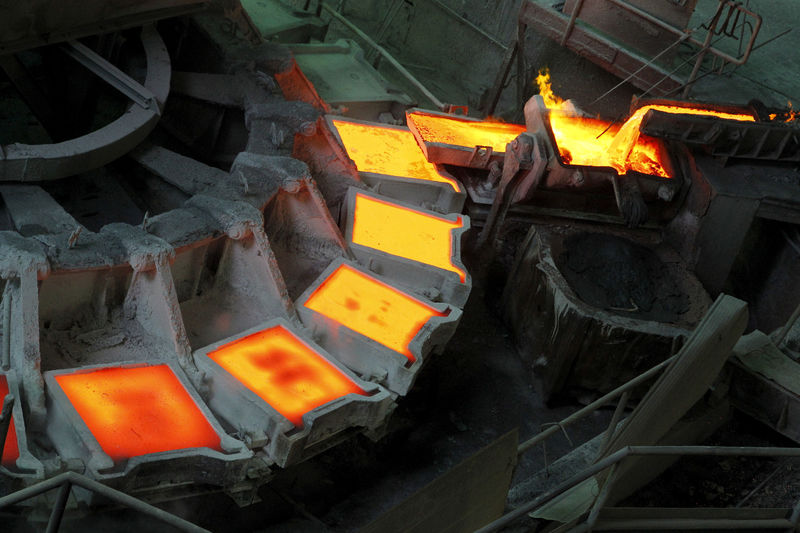By Eric Onstad and Pratima Desai
LONDON (Reuters) - A service will launch next week for funds managers, traders and miners that uses satellites to keep copper smelters under surveillance to get quick word of when they shut down and ramp up.
Britain-based Earth-i, which specialises in geospatial data, aims to sell its SAVANT service to the finance sector since news of a major smelter going off-line or restarting can jolt the copper price.
The copper market is also widely watched by analysts as a leading indicator of the health of the global economy because the metal has such a wide range of uses, from construction to manufacturing, earning it the nickname "Doctor Copper".
The new service aims to inform subscribers before smelter firm's make their announcements, which can be delayed by many days even when listed firms are obliged to report. Private firms have no obligation to report smelter activity to the market.
Most surveys of smelter activity are now released on a monthly basis.
Earth-i, which already offers services to construction, defence and agricultural sectors, plans to launch the new copper service on Oct. 18, a statement said.
"Historically when you look at smelters, the challenge has been getting up-to-date information," Earth-i Chief Technology Officer John Linwood told Reuters.
For the past year Earth-i has been trialing the SAVANT smelter product with traders, fund managers and producers.
Linwood said the SAVANT https://www.earthi.space/savant system, developed with the European Space Agency and commodities broker Marex Spectron, was able to detect an extended smelter closure in the world's biggest copper producing country Chile this year.
Codelco had said it would close its Chuquicamata and Salvador smelters from Dec. 13, 2018 for 75 and 45 days respectively to meet stricter environmental rules. But the closure lasted longer than expected.
"We were able to tell they were going on much longer before they came out and said so," Linwood added.
The system, which tracks 100 smelters accounting for 80-90% of global production, combines satellite imagery with artificial intelligence and machine learning to produce its data.
"You get all sorts of spurious information that you have to filter out, like sunlight being reflected off water. We've had to develop all our algorithms to deal with those things," Linwood said.
Earth-i uses more than 20 high-resolution satellites and launched its own satellite last year capable of collecting high definition colour video.
A basic product would cost about $10,000 a year, but it could go up to $250,000 with higher levels of detailed data and frequency, said Guy Wolf, global head of market analytics at Marex Spectron.
A free index of global copper smelter activity is also due to be published monthly on a delayed basis.
For a graphic on SAVANT Global Copper Smelting Index, click https://fingfx.thomsonreuters.com/gfx/mkt/12/7034/6965/SAVANT%20copper%20smelting%20index.png
The index for China has shown a rebound since the end of September from about 85% capacity to over 95%, similar to a sharp rebound earlier this year in May, Wolf said.
"LME copper prices then rallied from $5,830 a tonne to over $6,000 a tonne in less than a month. The index is therefore suggesting we may witness a similar recovery from the recent trough of $5,650," Wolf said.

LME three month copper has shed 14% since touching a nine-month peak of $6,608.50 a tonne in April.